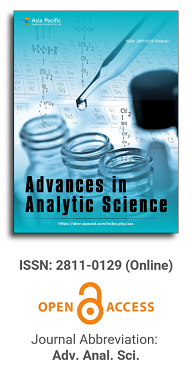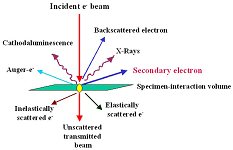
Asia Pacific Academy of Science Pte. Ltd. (APACSCI) specializes in international journal publishing. APACSCI adopts the open access publishing model and provides an important communication bridge for academic groups whose interest fields include engineering, technology, medicine, computer, mathematics, agriculture and forestry, and environment.

Inorganic elements found in the tuber of Radix Pseudostellariae from Guizhou Province
Vol 1, Issue 1, 2020
Download PDF
Abstract
By analyzing the inorganic elements in radix pseudostellariae from Guizhou, our goal is to evaluate its quality, establish heavy metal limits, create an element fingerprint, and identify characteristic elements. We measured the inorganic elements using ICP-MS, evaluated heavy metals according to WM/T2-2004 standards, and used principal component analysis to identify key elements. Results showed inorganic element content ranged from 0.057 to 959 mg/kg, with coefficients of variation from 0.134 to 1.478. Levels of Cd, As, Pb, and Hg were below WM/T2-2004 standards in 90% of the samples. The proposed heavy metal limits are Cr ≤ 6.5 mg/kg, Cu ≤ 10 mg/kg, As ≤ 2.0 mg/kg, Cd ≤ 0.3 mg/kg, Hg ≤ 0.15 mg/kg, and Pb ≤ 4.0 mg/kg. The element fingerprint provides a basis for assessing radix pseudostellariae quality and differentiating it from other Chinese herbs. Characteristic inorganic elements identified include Cd, Cu, Co, Zn, Fe, Ca, Mg, and Al. The study found radix pseudostellariae from Guizhou to have a rich inorganic profile, with heavy metal content meeting evaluation criteria, and established both limits and an element fingerprint.
Keywords
References
- Liu X, Wang M, Cai B, et al. Analysis of volatile components of Radix Pseudostellariae from different habitats by gas chromatography-mass spectrometry. Shi Zhen, Guoyi, Guoyao. 2007; 18(1): 43-45.
- Feast spring ploughing. Research and application of medicinal plant pseudoginseng. Modern Chinese herbal medicine research and practice. 2008; 22(2): 61-65.
- Liu J. Overview of research on Radix Pseudostellariae. Clinical medicine practice. 2009; 2(1): 1242-1245.
- Peng H, Liu W, Hu Z. Research Progress on biological and chemical constituents of Pseudostellaria heterophylla. Chinese herbal medicine. 2008; 39(3): 470-473.
- Wang J. New progress in pharmacological research of Radix Pseudostellariae. Practical drugs and clinic. 2013; 16(4): 333-334.
- Ma Y, Hou Y, Zou L, et al. Dynamic analysis of inorganic element accumulation in Radix Pseudostellariae. Shizhen Guoyi Guoyao. 2015; 26(4): 975-977.
- Zeng Y, Song J, Liu X, et al. Analysis of inorganic elements in Radix Pseudostellariae. Chinese Journal of traditional Chinese medicine. 2008; 26(2): 330-332.
- Yu G, Liu X, Pan H, et al. Study on trace element analysis of five pseudoginseng strains. Chinese medical plant resources. 1998; 17(4): 20-22.
- Hong W, Zhao J, Li S. Current situation and Countermeasures of heavy metal limit control in traditional Chinese medicine. Journal of pharmaceutical analysis. 2007; 27(11): 1849-1853.
- Huang X. Study on the correlation between the quality of Radix Pseudostellariae produced in Guizhou and soil inorganic elements. Guiyang Medical College; 2015. p. 92.
- Nie L, Jin H, Wang G, et al. Study on the detection methods of heavy metals and harmful elements residues in four traditional Chinese medicine injections. Chinese Journal of traditional Chinese medicine. 2008; 33(23): 2764-2767.
- Li M, Liu Y, Zhou R, et al. The landscape limitation standards and analysis of heavy metals and arsenic salts in traditional Chinese medicine at home and abroad. Shi Zhen, Guoyi, Guoyao. 2007; 18(11): 2859-2860.
- Li S, Liu X, Zeng Y, et al. Determination of heavy metals in Radix Pseudostellariae from different habitats. Shi Zhen, Guoyi, Guoyao. 2007; 18(8): 1825-1826.
- Xiong X, Chen X, Chen H. Copper in 3 kinds of Chinese medicinal materials, such as Radix Pseudostellariae. Lead. Arsenic. Mercury. Analysis and Research on the content of cellulose. Drug identification. 2010; 7(10): 78- 80.
- Foreign trade industry standards of the people’s Republic of China. Green industry standards for foreign trade of medicinal plants and preparations. WM/T2-2004[S]. Foreign trade industry standards of the people’s Republic of China; 2004.
- Spring. Research progress of fingerprint of medicinal plant Pseudostellaria heterophylla. Chemical engineering and equipment. 2010; (28): 126-127.
- Bai S. Study on the components of Radix Pseudostellariae based on fingerprint. Fujian University of traditional Chinese medicine; 2014. pp. 53-54.
- Liu H, Lin C, Zhang Q, et al. Absorption and enrichment of heavy metal elements in soil by Radix Scrophulariae. Hubei agricultural sciences. 2015; 54(3): 644-646+657.
- Wan X, Tan Y. Pretreatment of raw data of principal component analysis. China health statistics. 2005; 22(5): 327- 329.
- Peng Y, Chen R, Yang R, et al. Content and authenticity of 14 inorganic elements in Pseudostellaria heterophylla and its planting soil in Wudang District of Guiyang City. Guizhou Agricultural Science. 2014; 42(11): 109-113.
- Wu Q, Xia P, Liu Y, et al. Study on the residues of heavy metals and organochlorine pesticides in soil and medicinal materials of Guizhou Pseudostellaria heterophylla planting base. Anhui Agricultural Science. 2008; 36(28): 12478-12479.
Supporting Agencies
Copyright (c) 2020 Daixing Shao, Hong Liu, Changhu Lin, Lin Li, Kaifang Zhou

This work is licensed under a Creative Commons Attribution 4.0 International License.

This site is licensed under a Creative Commons Attribution 4.0 International License (CC BY 4.0).
1.jpg)
Prof. Sivanesan Subramanian
Anna University, India





.jpg)
